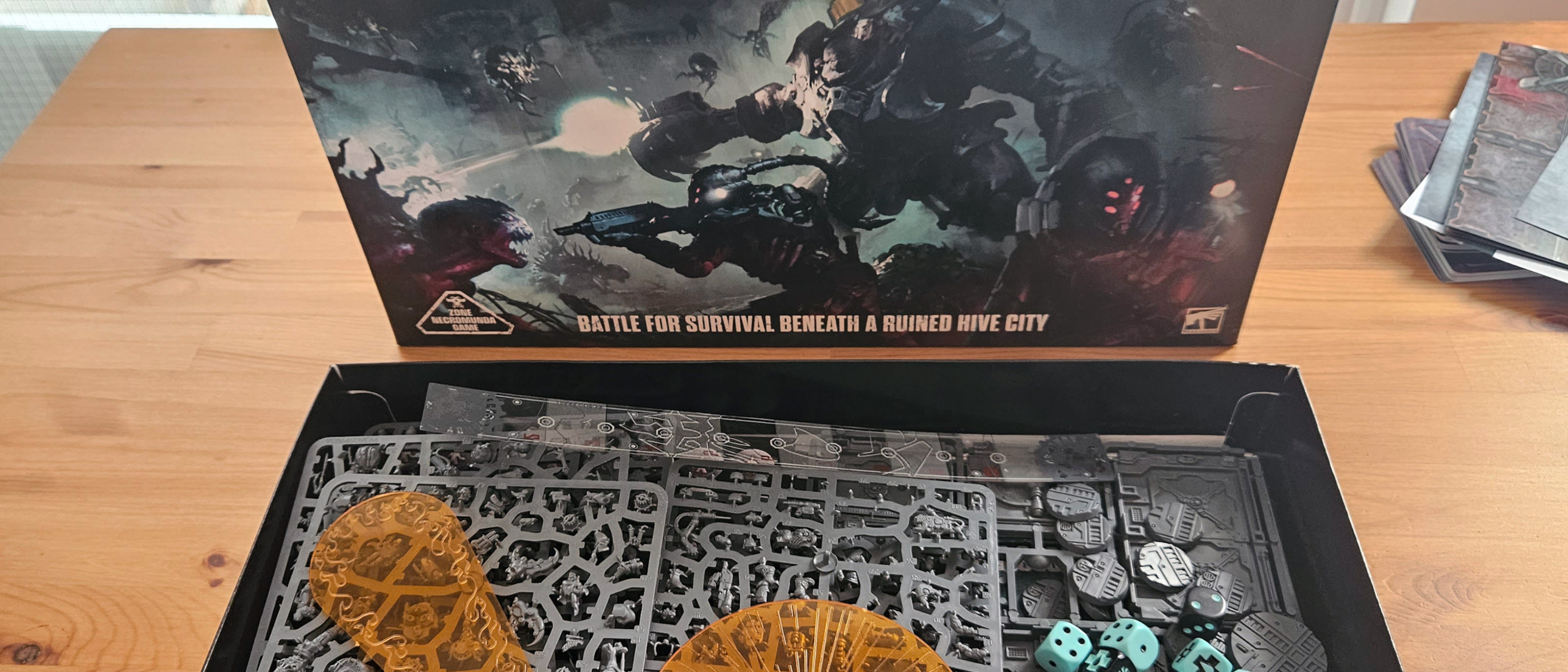Why you can trust GamesRadar+
Recent updates
We're not quite ready to put a score on Necromunda: Hive Secundus yet, so here are our initial thoughts to give you a sense of what the new Warhammer box set is like.
For people of a certain age (ie. my age) there's no bigger Warhammer baddie than the Genestealer. Sure, the forces of Chaos are canonically the arch foes of the Imperium, but I grew up playing Space Hulk before I ever got my hands on a copy of 40K and there's just something classic about the thought of purple-skinned 'stealers swarming through shadowy corridors.
You can imagine my delight, then, when Necromunda: Hive Secundus was announced. I was an avid player of first edition Necromunda and while I've only dipped my toe into the most recent edition a few times, this looked like an excellent way to get me properly involved. The game pits treasure hunters from Necromunda's technologically advanced House Van Saar against a Genestealer cult and even features a new adaptation of the beastie: the Malstrain Genestealer. Lovely! (Actually, they're horrible, but you know what I mean.)
Well, I've got my hands on a copy of Hive Secundus now and have been able to spend a week or so getting to grips with the new set. Here’s what I made of it.
What's in the box?
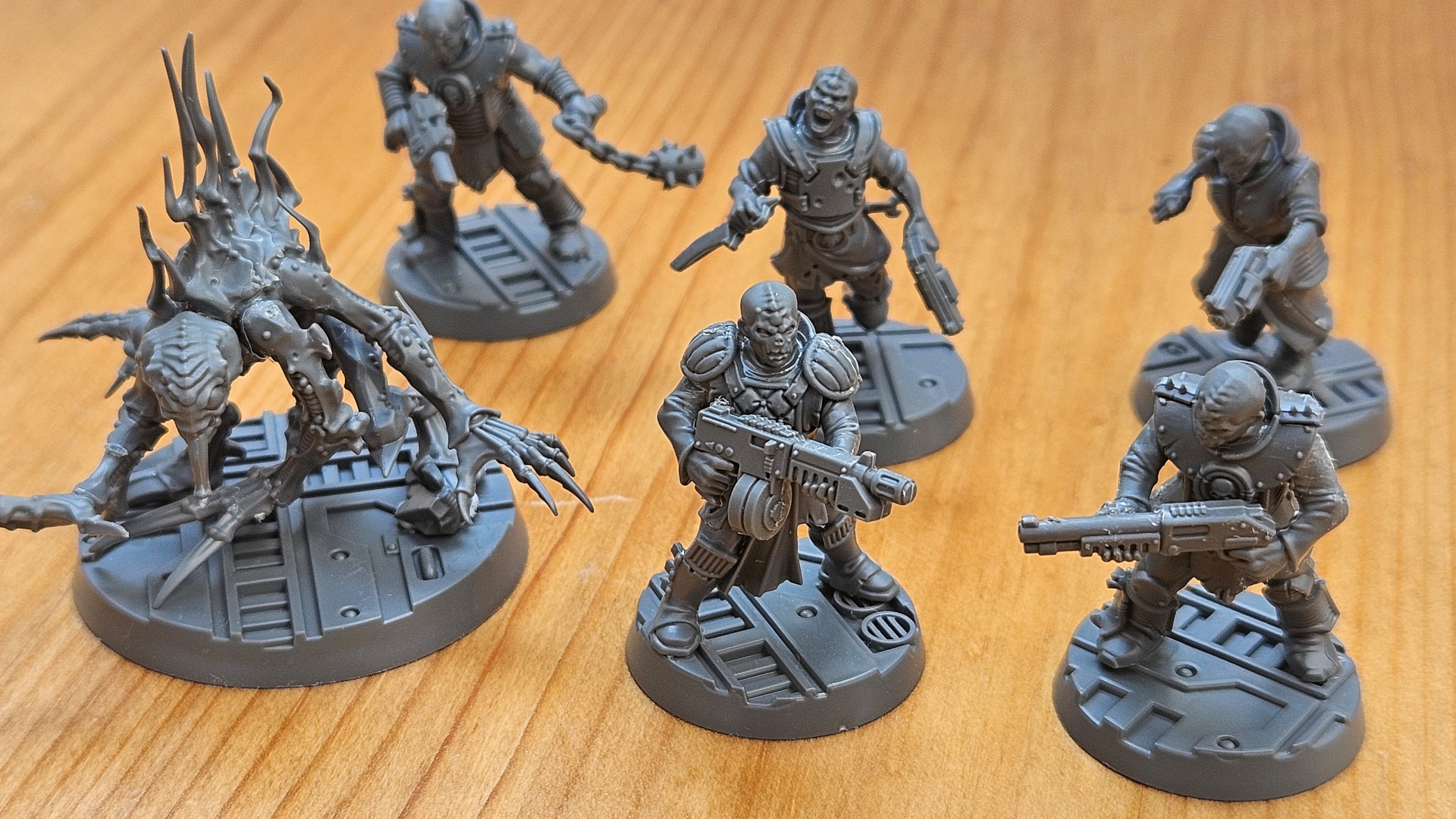
At first glance Necromunda: Hive Secundus looks like a standalone board game for adults in the vein of Warhammer Quest: Blackstone Fortress or indeed Space Hulk (for goodness’ sake, GW, put us out of our misery and bring it back – even just a reprint of the old edition would be great). That's not quite correct, however. In fact this is, for all intents and purposes, simply Necromunda underground. That's not a bad thing – it's a very fine game – but this is clearly intended as an entry point into the hobby, rather than a purely standalone game.
In the box you get a Hive Secundus-specific edition of the Necromunda Rulebook, two "double-sided paper playing surfaces," and a deck featuring Archeo-loot, Underhells Territory, and fighter cards. You also get a sprue of bulkheads, dice (have that, Age of Sigmar!) and, of course, the models for the two opposing factions.
Let's look at those… They are, of course, beautiful sculpts and almost all new (the Genestealer player gets a cadre of Brood Scum, which repurpose the old Hive Scum sprue, but with new cult-specific heads). They're also quite a lot fiddlier than your typical Warhammer boxed game models. Even a glance at the sprues makes it clear that, while the set seems aimed at getting new players in Necromunda, this isn’t really a set for beginner hobbyists. The Orrus Spyre Hunters, for example, have more than 30 parts each, not counting their optional weapons, and even the more humble Genestealer has around 10. This isn’t a criticism, but getting into this thing is a real project, rife with opportunities for small parts to fly across the room and get lost in your carpet forever, so take care while assembling.
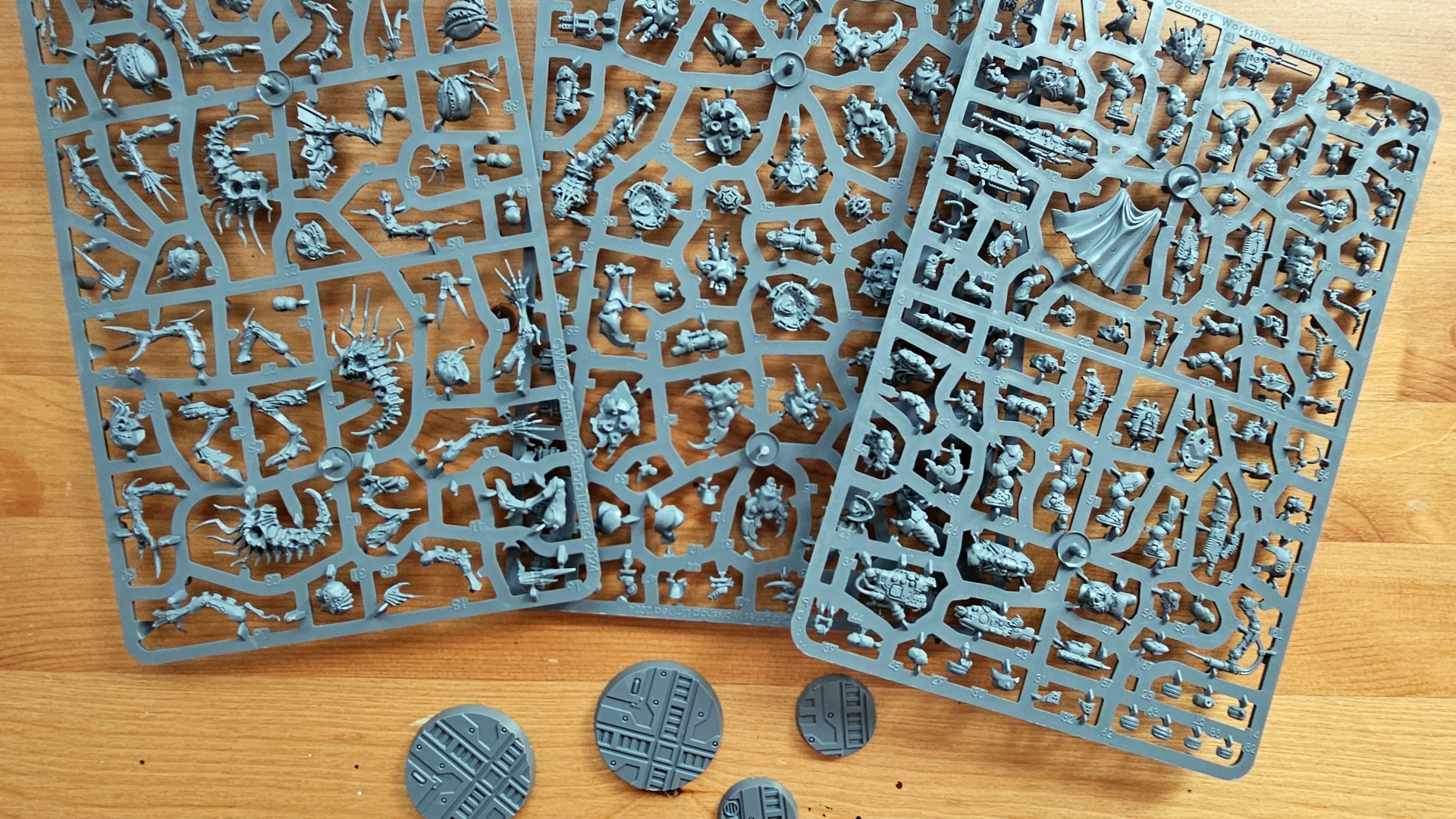
The Van Saar Tek Hunters are a neat evolution of the regular House Van Saar gang. There's a cool, quasi-Still Suit look to the Van Saar design, which predates the Dune movies, but has a similar aesthetic. And the new Spyre Hunters are simply great – hulking, insectile-looking blends of man and machine. These pampered rich kids with heavy weaponry were always one of the original game’s most evocative ideas, but the minis didn’t quite do them justice before. These redesigned models are a vast improvement. Also shout out to the horrible, cherub-like Caryatid Prime, a lovely bit of classic 40K weirdness.
On the other side, the Malstrain Genestealers are leaner and creepier than the regular models, but bigger and with weird, distended carapace spikes growing out of their backs like stalagmites. The Malstrain Tyramites, meanwhile, are tiny flying bugs that attach to clear flight stands. However, these bring their own set of woes: namely, tiny limbs that are so fragile that they break without warning. Use your sharpest clippers and be very careful when cleaning up any bits of flash or mold lines. The Brood Scum, as mentioned above, are older models with new heads, but I really like how much character they have for, essentially, canon fodder.
All of the models come with sculpted Necromunda bases – a really nice touch.
Lore and rules
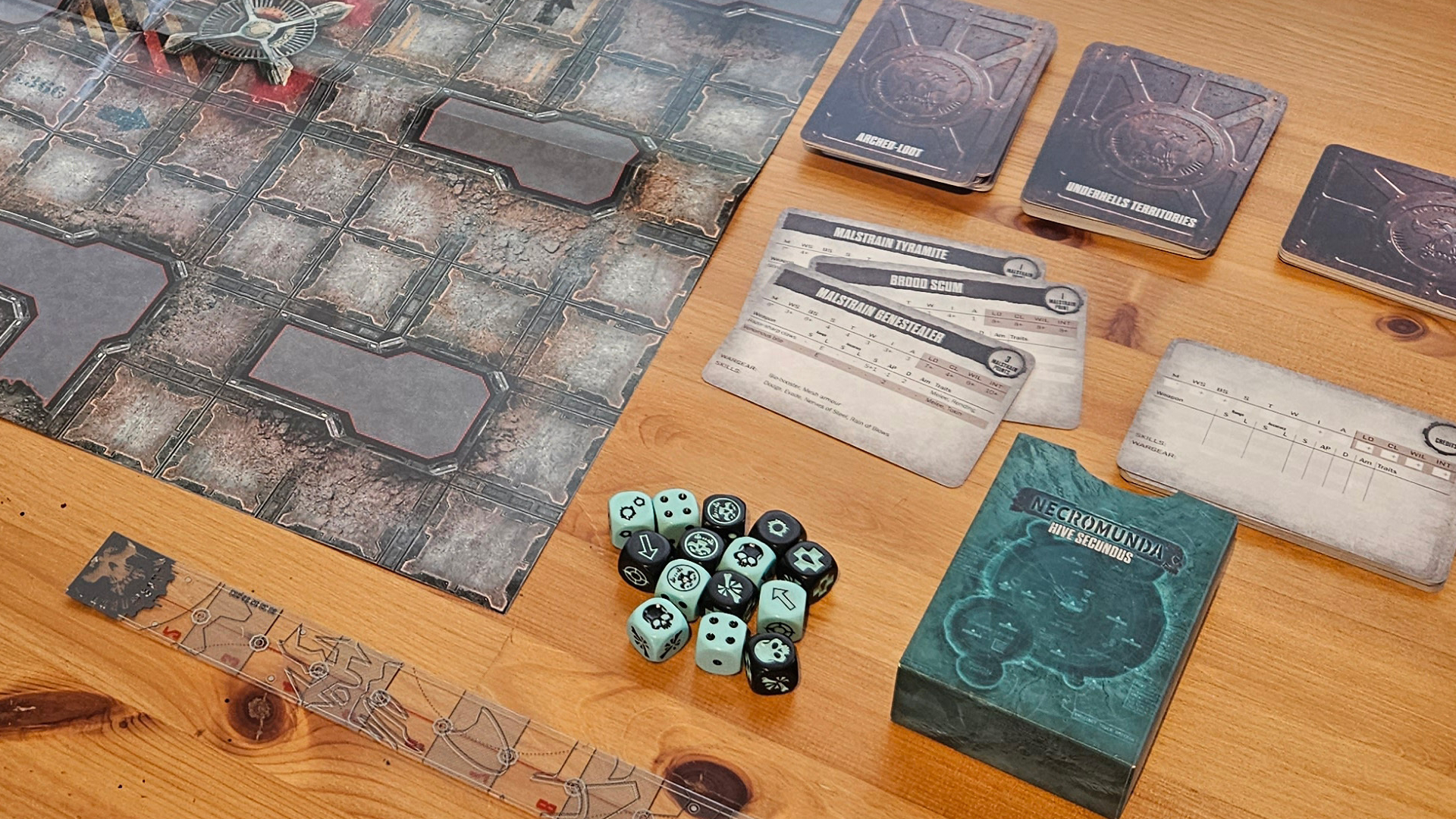
The Rulebook is a 176-page softback rather than the regular 336-page hardback Necromunda core book. Fluff takes up the first 30 or so pages, with the rest dedicated to the core rules, missions, and model profiles. For the most part the rules appear to be largely the same as the main game, though rules for vehicles are a notable absence, on the basis that they simply won’t fit into the tight corridors of the Underhells. Anyone who is switched onto the game by playing Hive Secundus will still eventually want to get their hands on a copy of the Core Book.
The lore is as evocative as you’d imagine, with a classic 2000 AD sci-fi dystopia feel in with the usual Warhammer 40,000 grimdark aesthetic. Hive Secundus was a teeming city that fell to the corruption of the Genestealers and then blasted into oblivion by the might of the Imperium. Now, the lore would generally suggest that a planet with such a prominent Genestealer Cult would be a prime target for Exterminatus, but Necromunda is valuable both politically and for the potential horde of Archeotech hidden in the Underhells, so the Imperium turns a blind eye. Today, Secundus exists as a collapsed, bombed out derelict, with a still thriving Genestealer Cult in the Underhells, and shanty towns growing up along the nearby Dust Wall that is meant to keep treasure hunters out. It doesn’t always work, however, and that’s where the Van Saar player comes in…
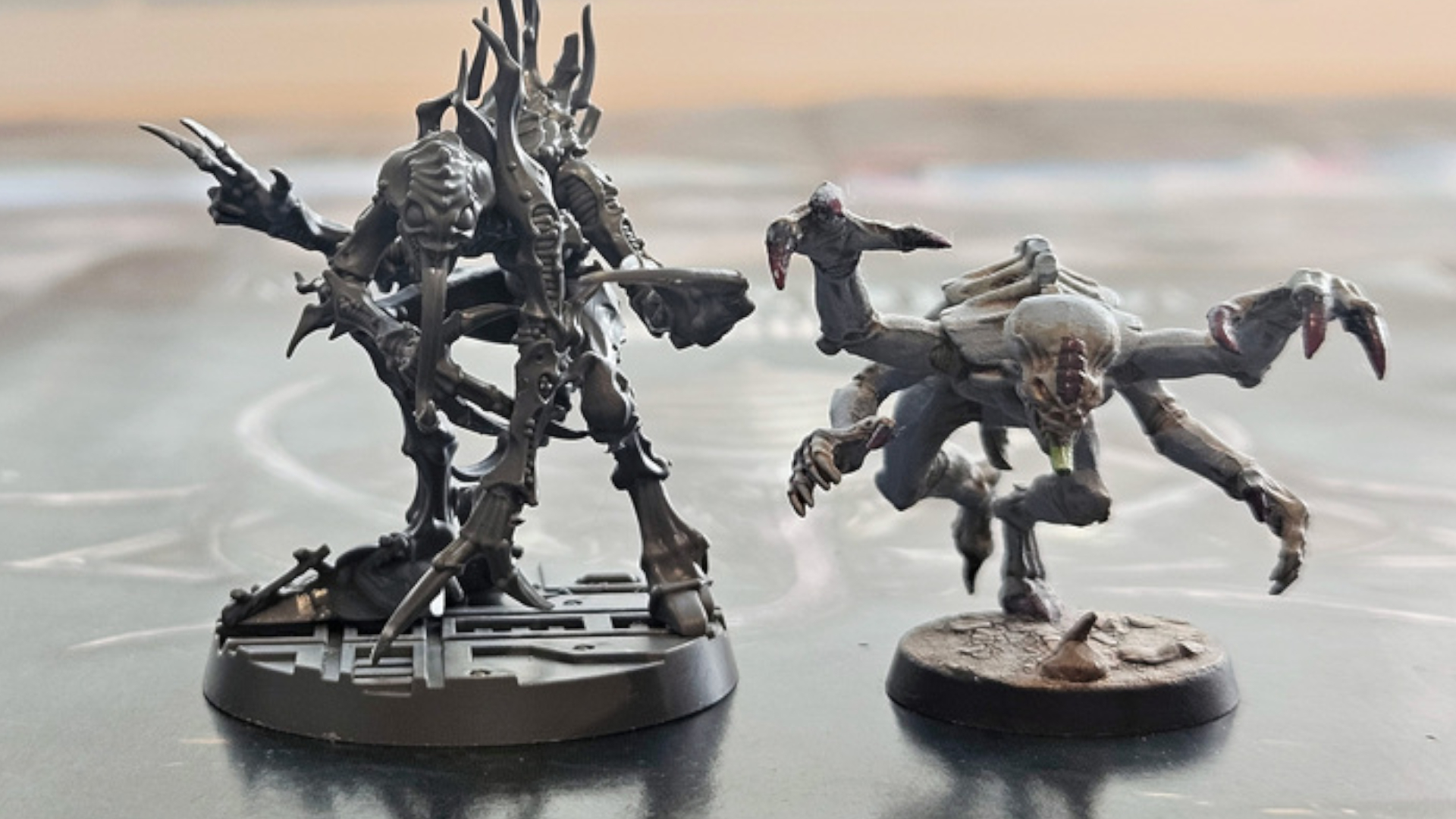
In Necromunda: Hive Secundus, one player takes on the role of the technologically-advanced gangers, the other the Malstrain cult. The book contains seven scenarios to play out, ranging from the Van Saar’s first breaking into the Underhells, to Genestealer ambushes, and purge missions. All good stuff, if quite familiar in theme. It still feels like there are a lot more stories to tell about Hive Secundus, which is presumably where the forthcoming Book of Desolation supplement will come in.
Games are played out on the supplied double-sided “paper playing surfaces” – and that’s where my major criticism of the set comes in. Put simply, they’re not very good – flimsy poster-paper thick mats with big folds in them that will wear out quickly. I’ve no idea how much it would have cost Games Workshop to make these in durable card, like the gorgeous boards used in Warhammer Underworlds – perhaps it was simply economically impractical – but it feels like a cut corner, especially given how high-quality everything else in the set feels.
Early verdict
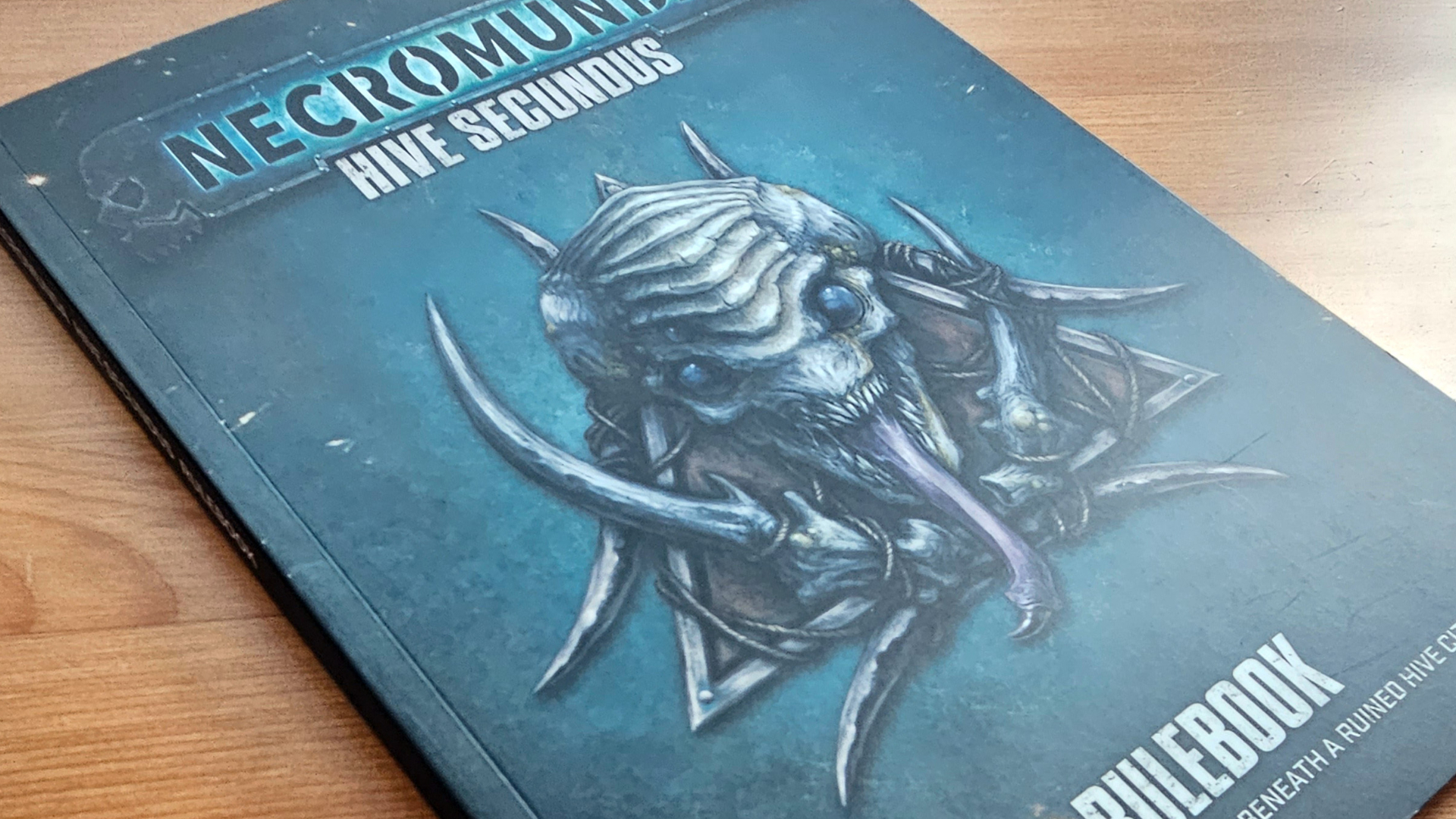
Necromunda: Hive Secundus, gripes about the playing surfaces aside, is a great set full of amazing models, cool lore, and a fun new way of playing this cult classic game. It does, however, feel a little confused about its place in Games Workshop’s ecosystem.
Necromunda as a whole sits firmly in GW’s specialist games bracket. People who get into it really get into it, but it’s never going to be as big as Age of Sigmar or 40K and that’s fine. It’s complex and granular with a richly-realized, evocative world. This set offers a new way into the game, but it's not quite suitable for very new players or hobbyists. It's challenging, both in a getting-to-grips-with-the-rules sense, and in terms of the brilliant but fiddly miniatures. Know what you’re getting into then, if you buy this one, but also know that it’s worth the effort and remains one of Games Workshop’s most rewarding systems.
This isn't the only big box relaunch Games Workshop has offered recently - it's also revamped its fantasy game, Age of Sigmar (you can see what's new in our guide to all of the Warhammer Age of Sigmar 4th Edition rules changes). It's certainly a good move if you ask me; Warhammer Age of Sigmar used to scare me, but Skaventide changed all that...

Will Salmon is the Streaming Editor for GamesRadar+. He has been writing about film, TV, comics, and music for more than 15 years, which is quite a long time if you stop and think about it. At Future he launched the scary movie magazine Horrorville, relaunched Comic Heroes, and has written for every issue of SFX magazine for well over a decade. His music writing has appeared in The Quietus, MOJO, Electronic Sound, Clash, and loads of other places too.
